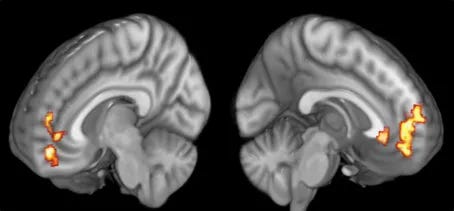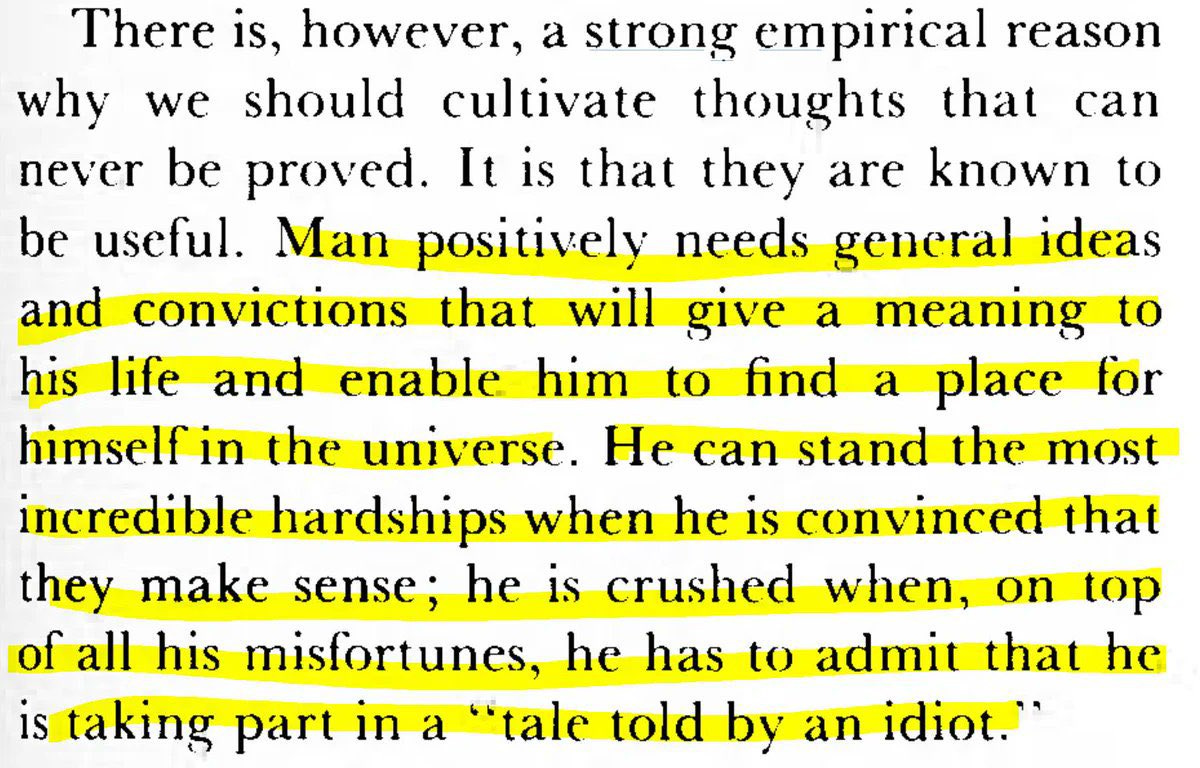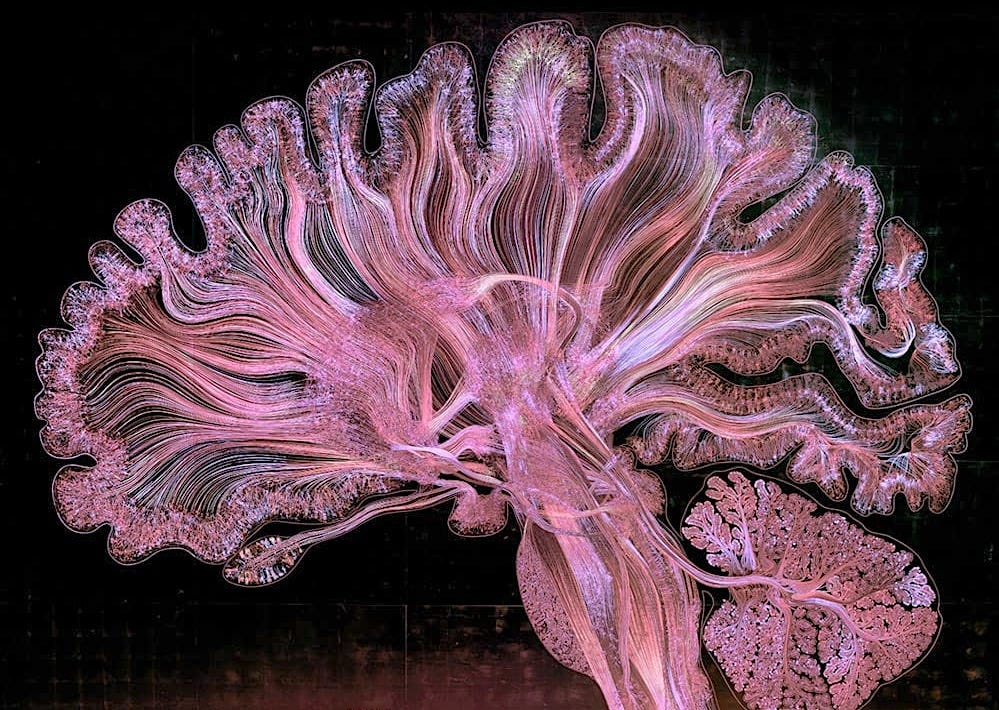Gratitude Sculpts The Brain
The Emerging Science of How Gratitude Activates Neural Pathways for Psychological Resilience
Gratitude is often dismissed as a fluffy feel-good habit; the kind of thing you jot down in a journal and forget by lunchtime. But emerging neuroscience tells a deeper story. Far from being just a pleasant sentiment, gratitude is a dynamic neural function that alters your brain in meaningful ways. Let's take a closer look at what actually happens inside your brain when you are in the psychological state of gratitude.
A Grateful Brain
In a study by Fox et al. (2015), researchers set out to understand how the brain processes gratitude. The stimulus used wasn’t your typical ‘write five things you're grateful for’ exercise. Instead, participants were asked to vividly imagine emotionally fatiguing situations in which they were the recipients of meaningful help: for example, one scenario was to imagine being a jew in Nazi Germany receiving life-saving food and shelter from a neighbour. As they immersed themselves in the detail of these imagined experiences, researchers scanned their brains using fMRI (functional magnetic resonance imaging).
And they found out what a grateful brain looks like:
Researchers found a clear pattern of activity in two key brain regions: (1) the anterior cingulate cortex and (2) the medial prefrontal cortex (mPFC). The more gratitude a person reported feeling, the more active these areas became.
The mPFC in particular is a seriously fascinating region. It’s known to be involved in high-level processes like reward evaluation, moral & ethical reasoning, social cognition, and perspective-taking. Effectively, the mPFC holds our capacity to understand another person’s point of view. It’s also deeply associated with how we construct meaning from experiences. In essence, when you feel grateful, you’re not solely reacting emotionally; you’re also interpreting your experience in a deeper, more meaningful, and socially connected way.
I’ve often said on here that I believe mental health is not the absence of emotional pain or suffering, mental health is the ability to live a fulfilled life despite it. The way to achieve this, is to find meaning in the suffering such that it becomes tolerable.
This process of meaning-making and perspective-shifting that we so desperately need, takes place in the mPFC.
So what does this mean for everyday life?
It means gratitude isn’t simply a passive response, it is a functional mental lens. A grateful brain is actively engaged in assigning positive meaning to events, recognising the intentions behind others’ actions, and reinforcing social bonds. In this way, gratitude becomes a kind of psychological scaffolding that informs how we interpret the world. This also makes sense from an evolutionary standpoint. Feeling gratitude toward others helps promote cooperation and trust, two things humans need to survive and thrive in groups. It’s no accident that gratitude lights up areas of the brain involved in morality and social interaction, it’s a deeply wired function of how we relate to each other.
Where To Start
Most of us have heard the advice to “keep a gratitude journal” or “write down three things you’re thankful for every day.” While these practices are a form of stimulus, recent research suggests there are significantly more powerful, and more neurologically engaging, ways to cultivate the function of gratitude.
A study by Hazlett et al. (2021) explored a slightly different protocol. Instead of listing things you’re grateful for, participants were asked to recall a moment when someone genuinely thanked them. The key was to re-experience the emotion: to remember the moment in vivid detail (Where were you? What did they say? How did it make you feel in your chest, your stomach, your hands, your whole body?), feel the positive sensations in the body, and reconnect with the social and emotional significance of that experience.
Even short sessions, just 1 to 5 minutes, were enough to yield measurable effects.
The results were striking. Compared to more surface-level gratitude exercises, this emotionally immersive practice led to:
Reduced anxiety, reflected in decreased activation of the amygdala, the brain’s central hub for fear and threat detection.
Lower levels of inflammatory markers, including TNF-alpha and interleukin-6 (IL-6), which are associated with chronic stress, depression, and long-term health risks like cardiovascular disease.
These findings suggest that gratitude doesn’t just make you feel better emotionally, it can literally change your brain’s wiring and calm your body’s stress response. It's not about pretending everything is okay; it’s about choosing to see meaning where you might otherwise see only hardship. And in doing so, we build the psychological scaffolding necessary to not just endure life, but to find fulfilment within it.
References:
Fox, G.R., Kaplan, J., Damasio, H. and Damasio, A., 2015. Neural correlates of gratitude. Brain and Behavior, 5(7), pp.e00321.
Hazlett, E., Gosnell, S.N., Muscatell, K.A. and Eisenberger, N.I., 2021. A novel gratitude intervention: Effects on psychological well-being and inflammatory markers. Emotion, Advance online publication.
Jung, C.G., 1964. Man and His Symbols. London: Aldus Books.








Thank you! Very interesting! Here's your chance to re-live in vivid Imagery my comment. This principle actually gets you thinking that maybe we might have wider opportunities for feelings of gratefulness particularly with any of our successes,accomplishments, failures when we realize that we always walk with a partner in these tasks , the grace, the involvement of god, allah, great spirit. Maybe we never act alone but always have assistance in our processes. How we interpret the final outcome or product will encourage resilience or cause us stress . This is a great POST!
Just thinking about the last sincere “thank you” I got was like stepping into the sun.